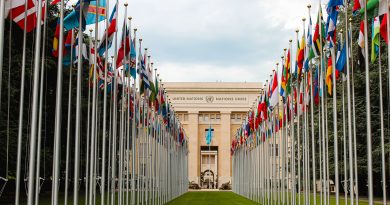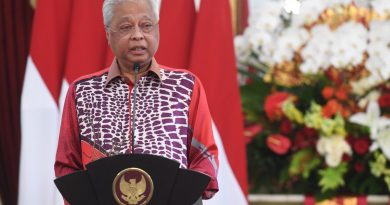EU and US Funding Influences Regional Development in West Africa and Central America through Migration Management
Patrick Condon
Staff Writer
The European Union and the United States are both experiencing increasingly deadly migration crises at their southern borders. From 2000 to 2020, cases of missing or dead migrants are estimated at over 39,000 people in the Mediterranean and around 7,000 people along the U.S.-Mexico border, although humanitarian agencies believe the actual number is much higher. With this scale of migratory insecurity, Western governments provide humanitarian aid to address the immediate impacts of the crises and they control the movement across borders to regulate the influx of migrants and their economic impacts.
International organizations (IOs) are frequently brought in to disperse aid to local communities in an effort to increase the efficacy of government aid distribution. IOs effectually operate as clients of states to deliver humanitarian assistance and manage migration externally. By shifting the management of migration from internal—having to provide assistance to migrants in the host country—to external—providing assistance to other countries to host migrants—governments promote their own “narrow national interests” through client IOs’ administration. This is becoming more popular with rising irregular migration rates in West Africa and Central America, two transit regions for migrants travelling northward. As the EU and the U.S. grow their roles as providers of humanitarian assistance to these regions, there has been a notable shift in the management of migration. Migration management now incorporates trade agreements, security, and international organizations to manage crises internally and externally, defining the present-day effects of migration.
The externalization of migration management derives from when the U.S. sought to reduce the number of Jewish refugees entering the country during World War II. This prompted the League of Nations, controlled by the U.S. and Europe, to provide a state solution for displaced Jewish refugees, partitioning Palestine and displacing 700,000 Palestinians. This has been reflected in numerous conflicts and resolutions since then, depicting a trend of European-U.S. delegating asylum to refugees in host countries outside the EU. Migration management has continued shifting toward an even more external focus: preventing migrants from reaching destination countries through international cooperation and project funding. The two most notable cases of this are in West Africa and Central America. According to the Organization for Economic Co-Operation and Development (OECD), in 2020, West Africa received a total of $7.77 billion from donor countries, while Central America received a total of $3.12 billion. The two largest donors in the OECD are the United States and the European Union. With longstanding colonial structures in many West African states, the EU is the second largest donor of official development assistance (ODA) to the region at $1.88 billion, following only the United States. In comparison, with primarily American-influenced structures in Central America, the largest donor of ODA to the region is the United States at $1.1 billion.
The cases selected for this comparison are limited to states sitting on the Development Assistance Committee (DAC) of the OECD as well as the EU, which provide a majority of humanitarian aid around the world, 70 percent of the nearly $200 billion donated in 2020. As the two largest donors are the EU and the U.S., their funding is highly impactful, particularly to neighboring regions. While the U.S. provides $2.5 billion to West Africa and the EU provides $604 million to Central America, ODA to neighboring regions is intended more on impacting migration and migration policies than general humanitarian assistance. Typically, aid to neighboring regions has a greater focus on security initiatives, largely due to migration across the donor’s own borders. Thus, the application of humanitarian aid in close proximity to a donor country impacts policies on migration in neighboring countries. This is the case for West Africa and Central America.
The Economic Community of West African States (ECOWAS) and the EU have one of the strongest trade relationships in the region. With the signing of an Economic Partnership Agreement (EPA) in 2014, the EU has become West Africa’s largest trade partner. In 2020, the agreement resulted in $55 billion in trade between the two regions, around 56 percent of all exports from West Africa. As the EU has been able to retain many colonial institutions, like the use of the West African CFA franc in ECOWAS states, it has politicized its own policies towards West African countries, particularly through incorporating EPAs into negotiations about development assistance. Recently, with growing insecurity in the region due to climate change and increasing violence, the EU has linked security and development policy together. This marks a significant shift in the pattern of ODA provision, incorporating Western governments further into the development of developing countries.
The EU is a primary financial and munitions supporter of the G5 Sahel, a group of five West African countries, which aims to provide security to the region. In recent years, EU foreign policy experts have witnessed the trend that the EU has “increased aid in particular for initiatives related to counter-terrorism and migration control,” linking humanitarian assistance via international organizations to security funding through troops on-the-ground in many West African countries. In West Africa, the EU has taken a central role to the funding of humanitarian aid and resolution of insecurity. This funding has taken form in two main areas, troop and munition supply as well as direct funding toward migration-regulating policies, like the provision of 20 million euros in 2016 and 2017 to Niger’s national budget, to be used for Internal Security Services and to drastically reduce irregular migration. While having boots on the ground allows for the control of movement, West African migration policies are most often impacted through indirect influence, mainly by the presence of IOs which serve to translate foreign policies into local and regional migration policies. The rise in migratory insecurity has made it more difficult for ECOWAS states to maintain their own migration policies, thus, ECOWAS, and its member states, have relied on EU policies and funding to address irregular migration in the region. In the long run, the IOs that implement EU migration policies retain priority over domestic organizations to administering humanitarian aid and addressing the root causes of irregular migration. In turn, as the primary partner of many NGOs in West Africa, the EU is able to externalize its migration policies and impact further development of national and regional policies on migration.
Central America and the United States have a more convoluted trade relationship than the trade relationship between the West Africa and the EU. Rather than two regional unions contracting a trade agreement with one another, the US has taken a much more individualized approach, under three different Free Trade Agreements (FTA) with Central American countries. In 2021, with Mexico in the new USMCA, Panama in a bilateral agreement, and multiple Central American and one Caribbean country in the CAFTA-DR, total trade value amounted to $661.1 billion, $8.89 billion, and $68.7 billion respectively. While a majority of the total $738.7 billion in exchange between the U.S. and most Central American countries is made up trade with Mexico, the U.S.’s influence on migration in the region spans much further than its southern border. Rather than linking humanitarian assistance to regional security, even though violence is rapidly increasing in Central America, the U.S. has approached regulating irregular migration and reducing insecurity through addressing the root causes of irregular migration. In July 2021, the Biden administration released a new Collaborative Migration Management Strategy, which seeks to resolve “high levels of crime and violence, lack of economic opportunity, weak governance, widespread corruption and impunity, the impacts of climate change, food insecurity, and the desire for family reunification.”
The U.S. has taken a central role in funding projects to reduce irregular migration and provide economic opportunities in Central America. The new Call to Action will partner with international, private-sector organization to provide more than $3.2 billion to migrant workers. This further engrains the strength of U.S. investment in Central American countries, bringing the private sector even closer to governments. As this will effectively increase displacement in most Central American countries, the U.S. is also able to offer targeted assistance to governments, in order to develop community integration initiatives and better the experience of settling migrants. In the long run, this may also lead to a prioritization of trade from the U.S. and collaboration with cooperative private-sector businesses. This new policy, in conjunction with private-sector funding, will effectively establish a system of migration prevention and economic pathways to externalize migration policies to Central American governments.
The externalization of migration management has allowed developed countries to directly impact the flow of migrants coming in and the settlement of migrants in the long term. By shifting funds towards security development in neighboring countries, the EU has effectively controlled the development of security initiatives to retain refugees within West Africa, halting the northward pattern of migration in the region. In the western hemisphere, the U.S. utilizes direct private funding to promote economic development, ultimately reducing irregular migration. Altogether, EU and US funding, in conjunction with client IO administration, is permanently impacting institutions in West Africa and Central America, both regional and domestic. This will likely lead to further manipulation of domestic and regional development by the EU and U.S. while restricting West Africa and Central America from achieving more independent development, dooming West Africa and Central America to fall even further under the influence of EU and U.S. policies.




